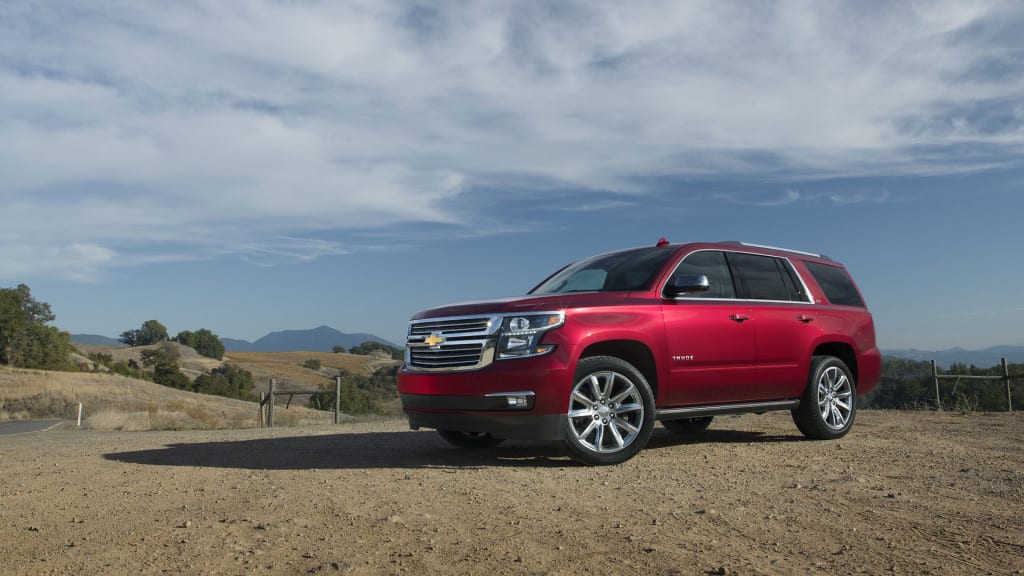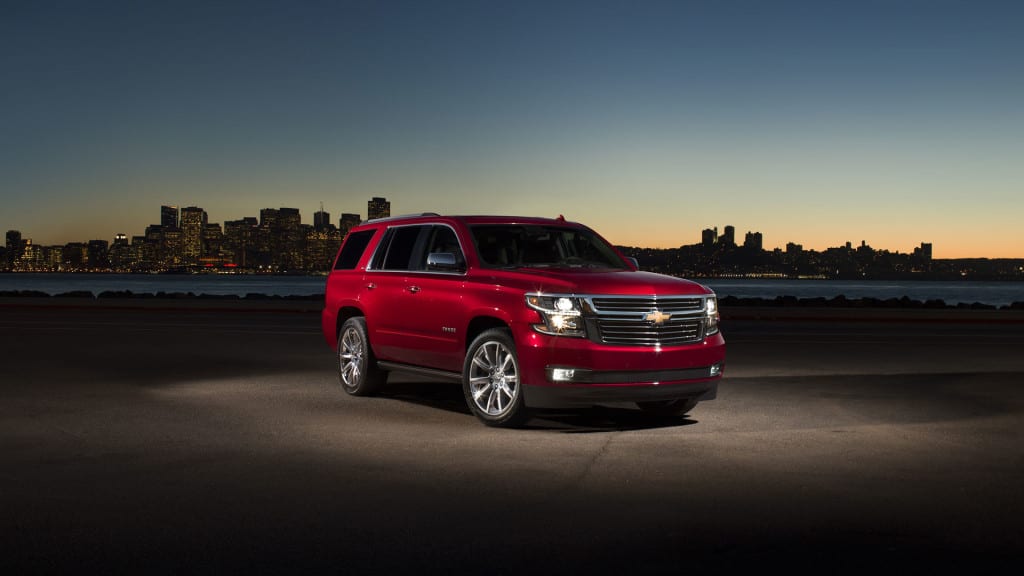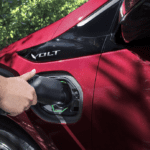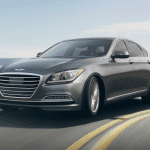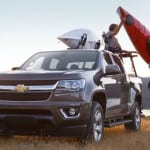The Chevrolet Tahoe has been a full-size SUV offering in the bowtie brand’s lineup since 1995. While these large SUVs were immediately popular in their first few years on the market, they lost a bit of ground when gas prices began to soar, and the economy began to decline. Despite a rocky road, Chevrolet has held on to the Tahoe, and it is still selling well today. The 2016 Chevy Tahoe is the newest model year for the large SUV, and it is has been showing up, and showing out, in a major way.
The Chevy Tahoe received a major overhaul for the 2015 model year, as it went from its third to fourth generation. Plenty of changes and updates made to the SUV helped keep the biggest model in Chevy’s lineup remain relevant in its segment. Having just been completely redesigned just one year ago, the 2016 Tahoe only features major changes to its trim levels, including a few new features and standard equipment.
A Rundown of the 2016 Chevy Tahoe
The 2016 Tahoe has been recently redesigned, and is touted as being more car like than ever before. This is an important recognition to receive, especially in a segment that has grown increasingly less popular overall. Drivers want the space and power that only a full size SUV can offer, but not the bulkiness and rough ride that some of these vehicles unfortunately include.
When the Tahoe was overhauled in 2015, Chevrolet improved upon some very important areas including fuel economy, and horsepower. The third row of the Tahoe now folds flat into the floor of the vehicle, rather than having to be removed as in previous models. An available 8-inch color touchscreen display was added to the Tahoe’s list of offerings, and came standard on the LTZ model. New performance upgrades included standard adaptive magnetic shock absorbers, also standard on the LTZ trim level.
For 2016, Chevrolet added the option of an Enhanced Driver Alert package for the LS model, which includes a lane-keeping system, a forward collision scanner, and more. The upscale LTZ also now has the option of adding an advanced heads-up display, while all three trim levels now include Apple CarPlay smartphone integration system as standard equipment.
All of these updates bestowed upon the Tahoe have helped it not only stay relevant, but also remain one of the best regarded nameplates in its class.
The Tahoe’s Competition
Unlike the rapidly growing crossover segment, the full-size SUV category has been dwindling in recent years, rather than expanding. With less offerings of its kind, that also means that competition has become even more tense between the models that remain on the market.
The GMC Yukon, Nissan Armada, Toyota Sequoia, and of course, the Ford Expedition, remain the major players in the full size SUV arena. Each of these brings revised expectations to the segment, desperately trying to stand out in the few offerings available.
With these four other models available, the Tahoe’s main competition throughout the years has been the Ford Expedition. The rival between the blue oval and bowtie brands has been raging since these two companies were first introduced. Today, they are two of the most popular brands in America, and it shows in the neck-in-neck race that exists between the Tahoe and Expedition.
The 2016 Tahoe vs. the 2016 Expedition
The Tahoe and Expedition may be longtime rivals, but their rivalry is coming to a head in 2016. With a more recent redesign and plenty of standard amenities, the Tahoe is taking the Expedition head on, and it’s winning.
Let’s take a look at a few key areas important to SUV drivers, and see how each of these models compare.
-
Price:
Price is one of the first things buyers look at when purchasing a new car. Full size SUVs are among the most expensive in the mainstream vehicle categories, so it should come as no surprise that both of these models start out above the $40,000 mark. The 2016 Expedition has a starting MSRP of $45,435, while the 2016 Tahoe costs slightly more at $47,000. This few thousand dollar difference is reflected in the list of standard amenities that the Tahoe includes and the Expedition leaves out.
-
Design:
In terms of style, functionality, and practicality, the Tahoe wins – hands down. With a complete redesign just one model year ago, the Tahoe is newly updated to meet the changing needs of its driver. The Expedition on the other hand, is still sitting with an eight-year old design that is both outdated and impractical. The Tahoe is modern, sleek, and designed for pure convenience, while the Expedition lacks in all three of these categories.
-
Fuel Economy:
While no one expects large SUVs to get incredible ratings from the EPA, it is still one of the most important factors for drivers in this segment. The 2016 Expedition manages 16 mpg in the city, and 22 in the highway. This number isn’t bad, but Tahoe’s 23 mpg highway rating wins out.
-
Interior Amenities:
On the base LS model, the Tahoe includes Chevy’s MyLink infotainment system with a 4.2-inch touchscreen display, a 110-volt power outlet, automatic climate control, steering wheel mounted audio controls, and 4G LTE built-in WiFi hotspot from OnStar. The Expedition, on the other hand, comes standard with manual climate control, a steering wheel with audio controls, the option to add the 110-volt power outlet, and not even the choice for Wi-Fi hotspot connectivity. The 2016 Tahoe is certainly the better choice when it comes to included amenities and in-vehicle technology, which in our estimation, is worth the extra $2,000 up front.
-
Safety:
Both the Tahoe and Expedition offer great standard safety features and ratings from safety institutions. The 2016 Tahoe includes OnStar Guidance for the first six months, rear park assist, a rear vision camera, StabiliTrak stability control system, and an automatic occupant sensing system – all standard. The Expedition also includes a standard rearview camera, and StabiliTrak system, but does not include a rear park assist system, or an automatic occupant sensor. Overall, the Tahoe packs more safety features as standard on its base model.
-
Power and Performance:
The 2016 Tahoe LS comes standard with a 5.3-liter EcoTec V8 engine for 355 horsepower, and 383 lb.-ft. of torque. Direct injection and variable valve timing comes standard on this engine, as well as FlexFuel which allows the use of either standard or E85 gasoline. The 2016 Expedition comes with a standard 3.5-liter EcoBoost V6, and offers slightly more powerful 365 horsepower, and 420 lb.-ft. of torque.
What it Comes Down to
Both the Chevy Tahoe and Ford Expedition offer great value in their segment. While the Tahoe may be slightly more expensive, it more than makes up for that fact with the standard and available amenities that the Tahoe either offers as an upgrade, or does not even have as an optional add on.
The Tahoe has been recently updated, while the Expedition sits behind an eight-year old outdated design. If functionality and design matters to you, then the 2016 Tahoe is certainly the better choice.
As it is with most of these comparisons, it really comes down to your personal preference. Even if you have always been a fan of Ford, we encourage you to at least test drive the 2016 Chevy Tahoe if you are in the market for a full size SUV. You may be surprised by how much you like it – and don’t worry, no one will tell Ford.
